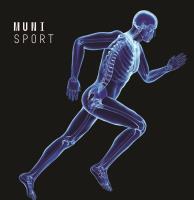Correlation Analysis Of Olympic-Style Weightlifting Exercises And Vertical Jumps
Correlation Analysis Of Olympic-Style Weightlifting Exercises And Vertical Jumps
Author(s): Tereza Králová, Jiří Gasior, Marian Vanderka, Jan Cacek, Tomáš Vencúrik, Dominik Bokůvka, Tereza HammerováSubject(s): Sports Studies
Published by: Masarykova univerzita nakladatelství
Keywords: snatch; clean and jerk; squat; deadlift; countermovement jump; squat jump
Summary/Abstract: PURPOSE Many types of vertical jumps (VJ) are commonly used to assess the development of the level of explosive strength of lower limbs achieved after a training period. This study is focused on comparing various parameters of different types of VJ with 1 RM in Olympic-style weightlifting, squat and deadlift with an Olympic bar.METHODS Twelve elite weightlifters (men=8; women=4; age 26±4 years, height = 173±8 cm; weight 93±23 kg; weight category from 64 kg to +109 kg) were tested for 1 RM in the following exercises: snatch, clean and jerk, deadlift, squat and variations of VJ on dynamometric plates (Kistler Force Plate). The variations of VJ were: squat jump with the arm swing (SJA) and non-arm swing (SJ), countermovement jump with the arm swing (CMJA) and non-arm swing (CMJ). The parameters compared for each type of VJ were: jump height (m), relative force (% of body weight), relative power (W/kg of body weight) and average power (W). For statistical analysis, the parametric Pearsons correlation coefficient with α=0.05 was used. RESULTS The results show a significant correlation between 1 RM in exercises with an Olympic bar (snatch, clean and jerk, back squat and deadlift) and the CMJ, CMJA, SJ and SJA only in the average power output (W) parameter (p<0.05). The significant correlation coefficients in the average power output (W) were for the CMJA and the snatch r=0.96 r2= 0.92, clean and jerk r=0.96 r2= 0.92, back squat r=0.97 r2= 0.94 and deadlift r=0.93 r2= 0.86; CMJ with hands on the hips and the snatch r=0.93 r2= 0.86, clean and jerk r= 0.93 r2= 0.86, back squat r= 0.95 r2= 0.90 and deadlift r= 0.94 r2= 0.88; for the SJA and the snatch r=0.8 r2= 0.64, clean and jerk r=0.81 r2= 0.65, back squat r=0.82 r2= 0.67 and deadlift r=0.78 r2= 0.60; for the SJ with hands on the hips and the snatch r= 0.76 r2= 0.57, clean and jerk r= 0.75 r2= 0.56, back squat r= 0.77 r2= 0.59 and deadlift r= 0.71 r2= 0.50. Significant correlation coefficients were not found for 1 RM in the snatch, clean and jerk, back squat and deadlift and the CMJ or SJ with and without arm swing in any of the following parameters: jump height (m), relative force (% of body weight), relative power output (W/kg of body weight).CONCLUSION The main finding is that the jump height (m) of the CMJ or SJ with or without arm swing did not correlate significantly with 1 RM in the snatch, clean and jerk, back squat and deadlift. Therefore, jump height measurement can be used as a motivation tool but not to predict maximum strength in Olympic bar exercises, or vice versa. We recommend using the average power output (W) parameter in the CMJ with using arms as a predictor of current performance level in exercises with an Olympic bar for men and women.
Journal: Studia sportiva
- Issue Year: 13/2019
- Issue No: 2
- Page Range: 26-32
- Page Count: 7
- Language: English

